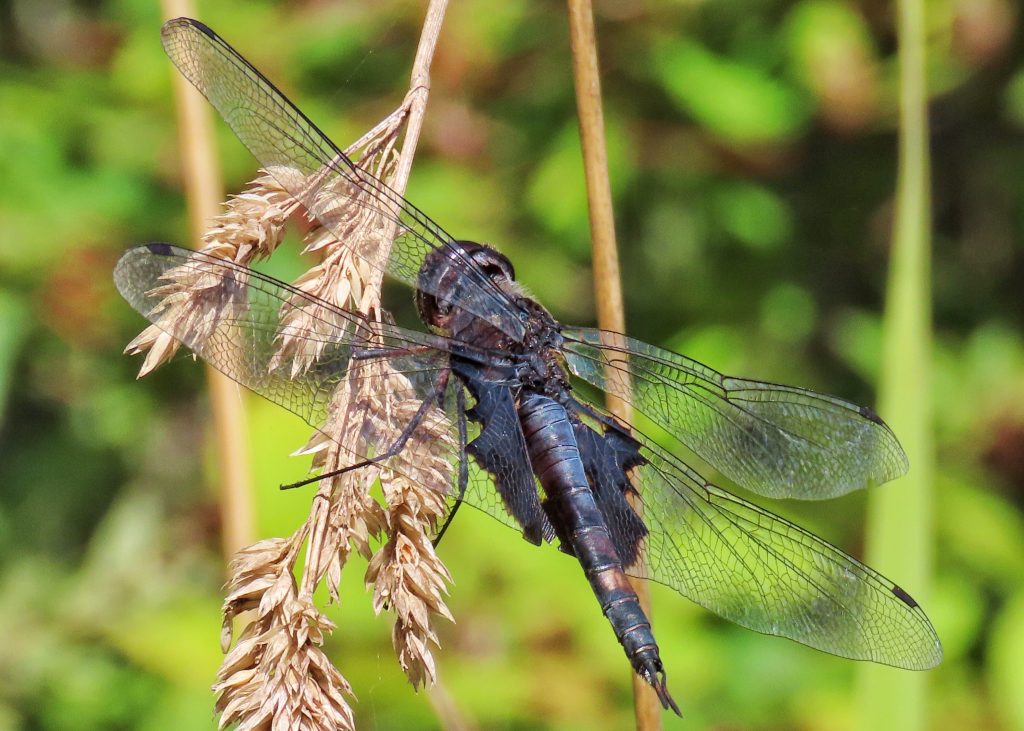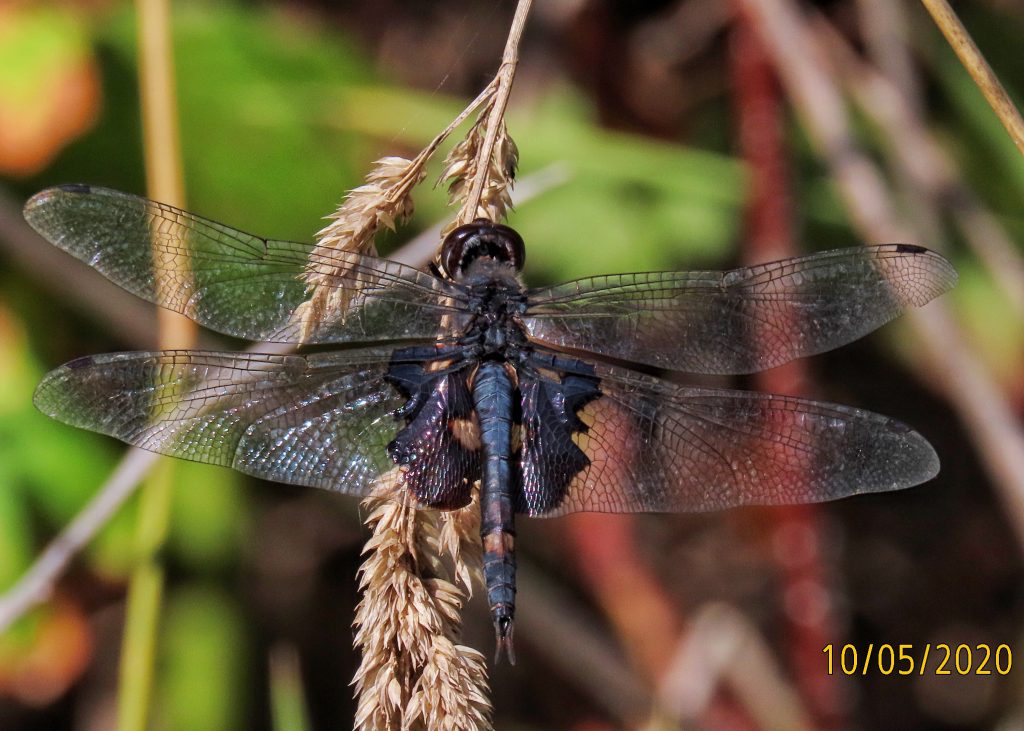
Black Saddlebags are very interesting dragonflies for several reasons. Foremost are the saddlebags themselves, patches of velvety black at the base of the hindwings. These irregularly shaped patches are often visible from a long ways off, especially against a blue sky, and, coupled with the fact that the hindwings are almost as long as the total body length, gives Tramea lacerata a unique giss (general impression of shape and size), and allows me to positively identify them from farther away than any other dragonfly.
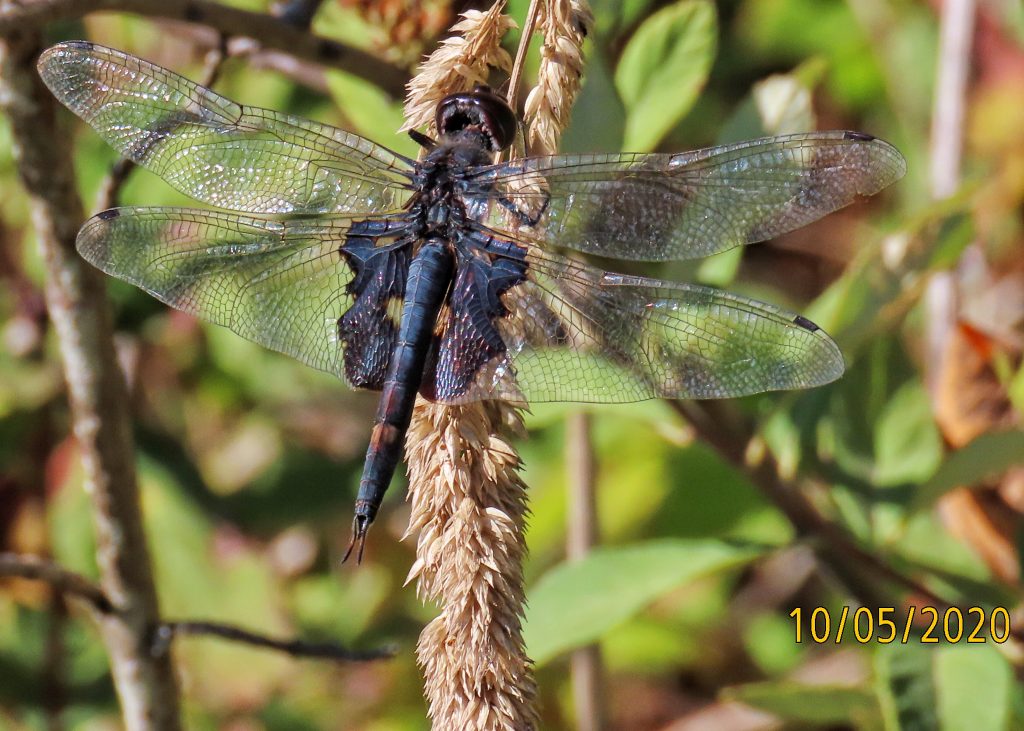
The reason for the relatively long wings is that they are travellers! Even the ones that don’t actually migrate cover a huge swath of territory. And many adults emerge in the spring in southern climes and move north, breeding as they go. Their young emerge in late summer and head south to complete the circle.
Though I read that they make low, patrolling flights, the majority of Black Saddlebags I see are at least 10’ above the ground. They don’t perch very often, and when they do it is usually at twig tips, well up into the trees, where they hang with their abdomen pointing downward. I hardly ever see them hanging within camera range, and this is only the second decent set of photos of a perched Tramea lacerata that I’ve ever taken.
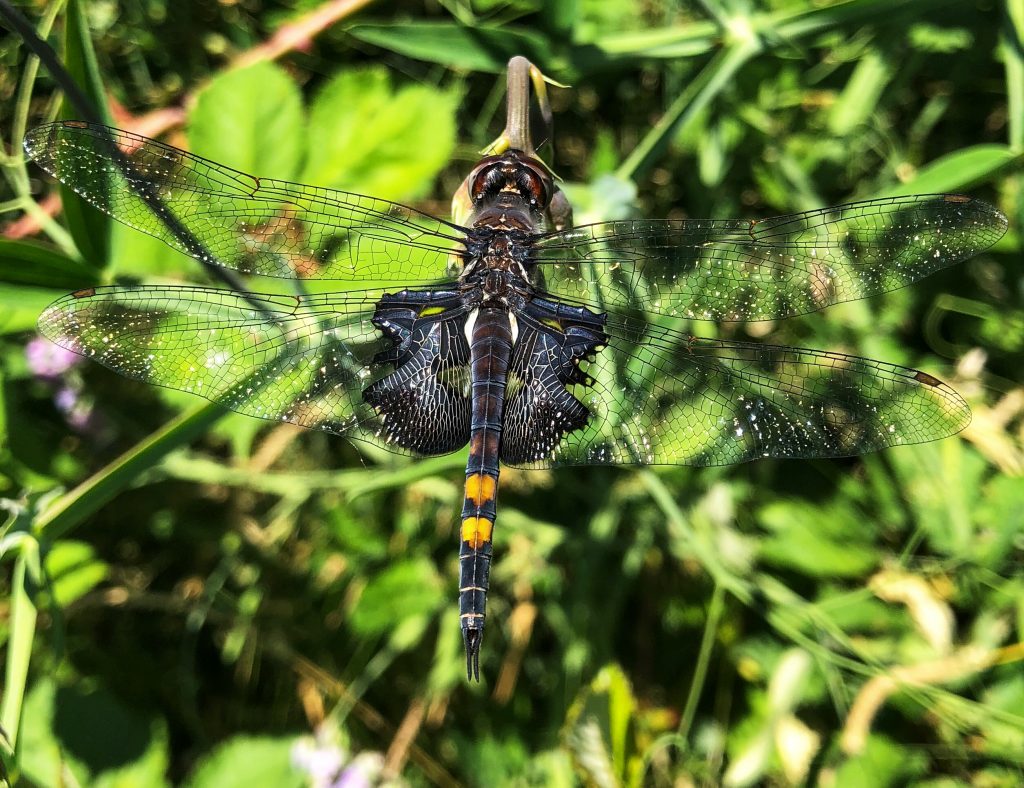
They are not likely to be confused with any other species in our region, due to the large wing patches only occurring on the hind wings. A few years ago there were some Red Saddlebags (Tramea onusta), which have black saddlebags but red bodies, that made it up to the Philomath area in Oregon, but none have been seen since. Males are all black except for faint yellowish spots on the abdomen, usually only visible on S7 in mature adults. Females have similar wing markings, and are brown with yellow spots which increase in size toward the posterior end of the abdomen. Female spotting may also become faint with maturity.
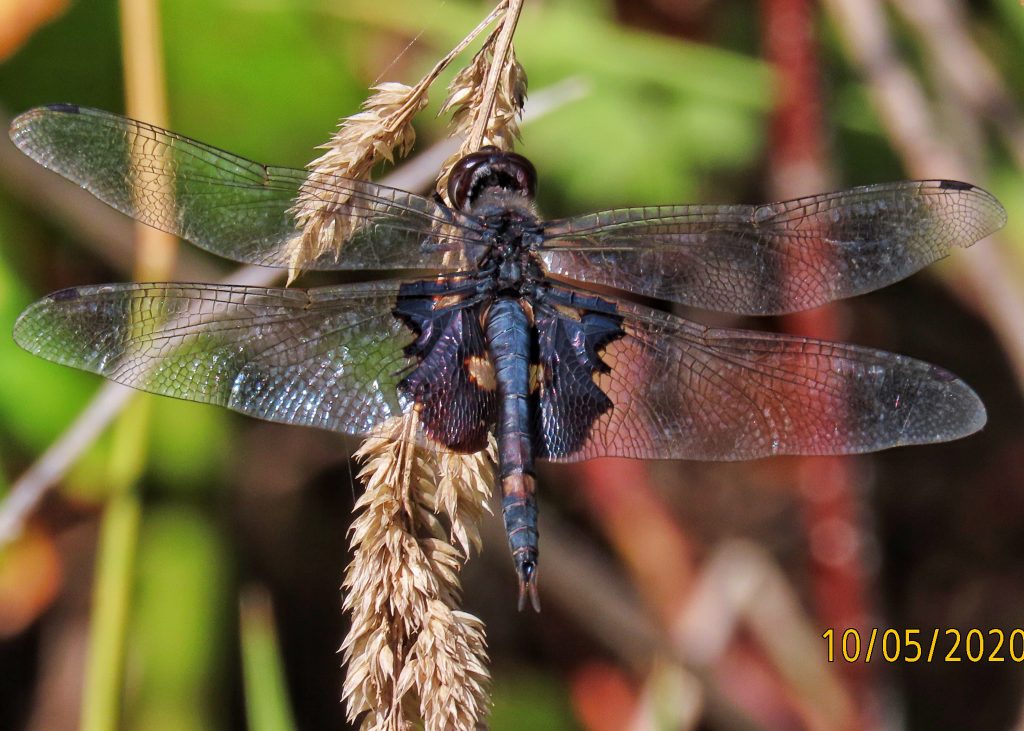
Tramea sp. in general oviposit in a unique way. After extended time in copulo the pair flies in tandem along weedbeds. When they spy a good location the female is released, and taps a few eggs into the appropriate spot, then returns to be clasped again by the male as they hunt for the next nursery spot.
Tramea is from the Latin trameo (to go over or through), apparently referring to their propensity for travel. The species epithet lacerata refers to the ragged outline of the hindwing patch.
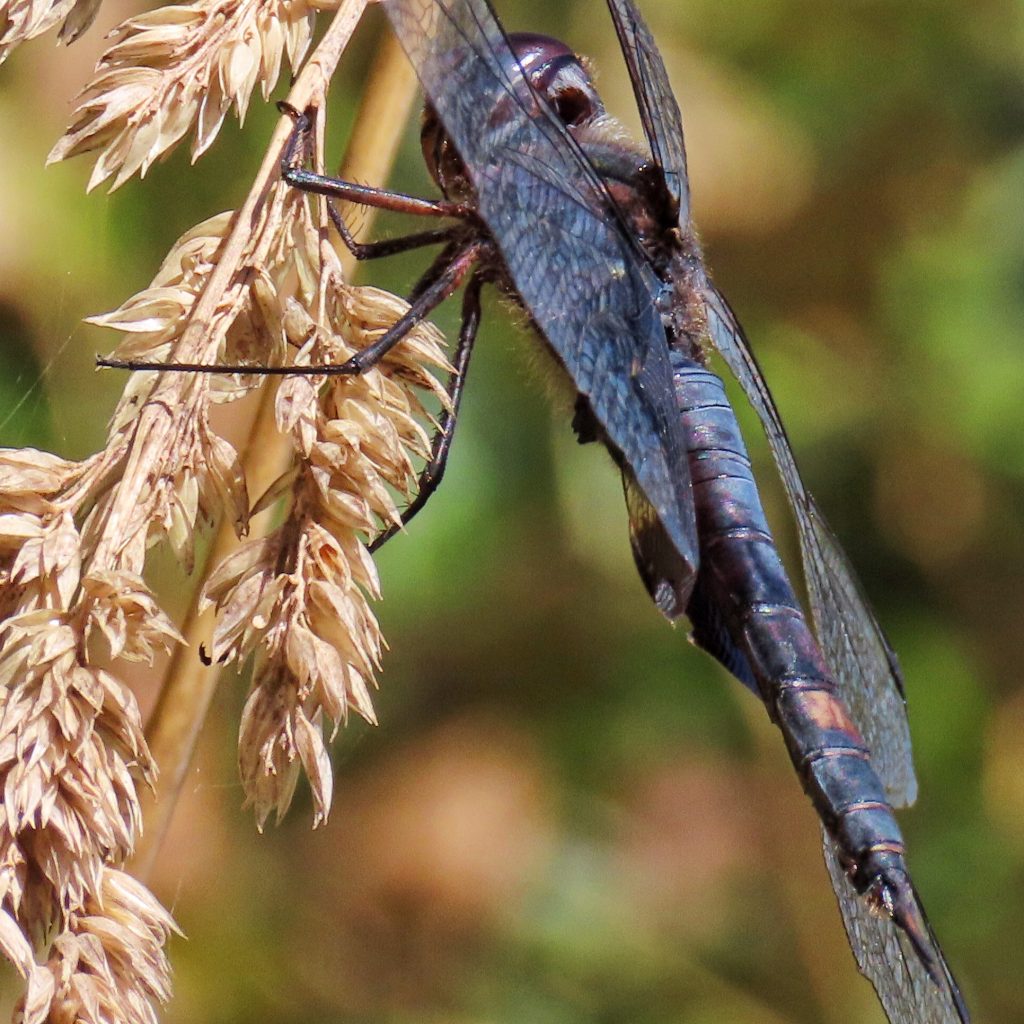
They fly from mid May to October in our region. In fact this specimen appears to be a new late date for this species in Washington state. They can be found region wide, and often very far from any water.
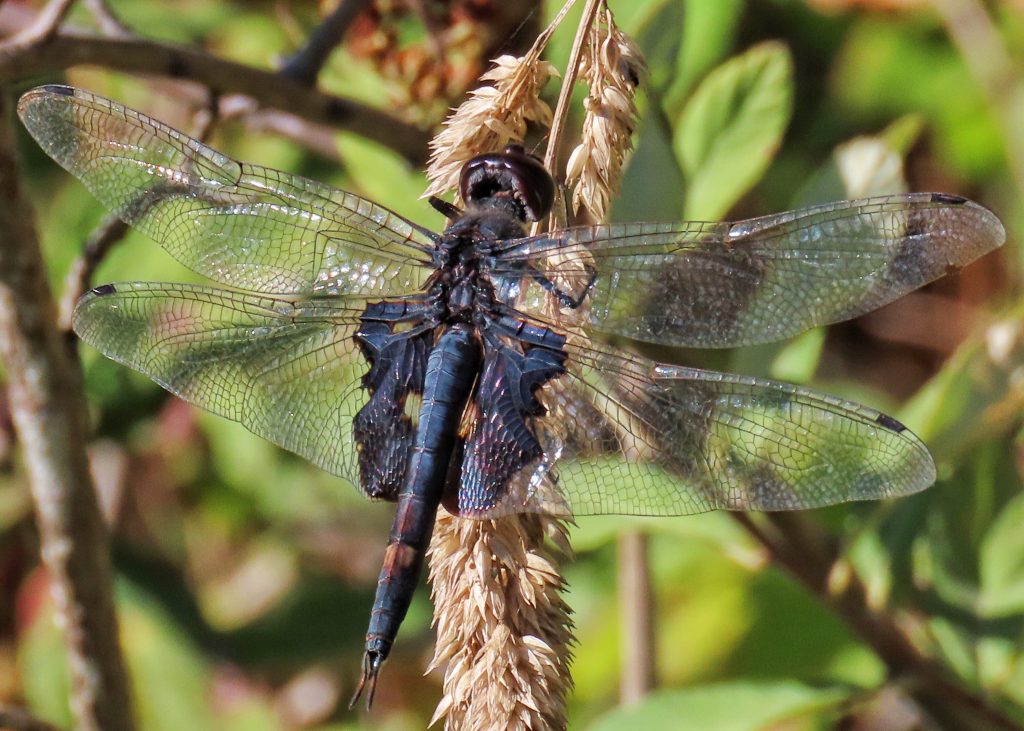
https://animaldiversity.org/accounts/Tramea_lacerata/
https://bugguide.net/node/view/3821
http://www.migratorydragonflypartnership.org/index/iDGuide?taxon=lacerata
https://ucanr.edu/blogs/blogcore/postdetail.cfm?postnum=27177
Size- Total length 50-55mm; hind wing 47-49mm
Habitat- Breeds at ponds, lakes, and slow moving rivers with abundant emergent vegetation; immatures and migrants may be found anywhere
Range- Region wide
Eats- Whatever it can subdue
Flight Season- Mid May to October in our region
